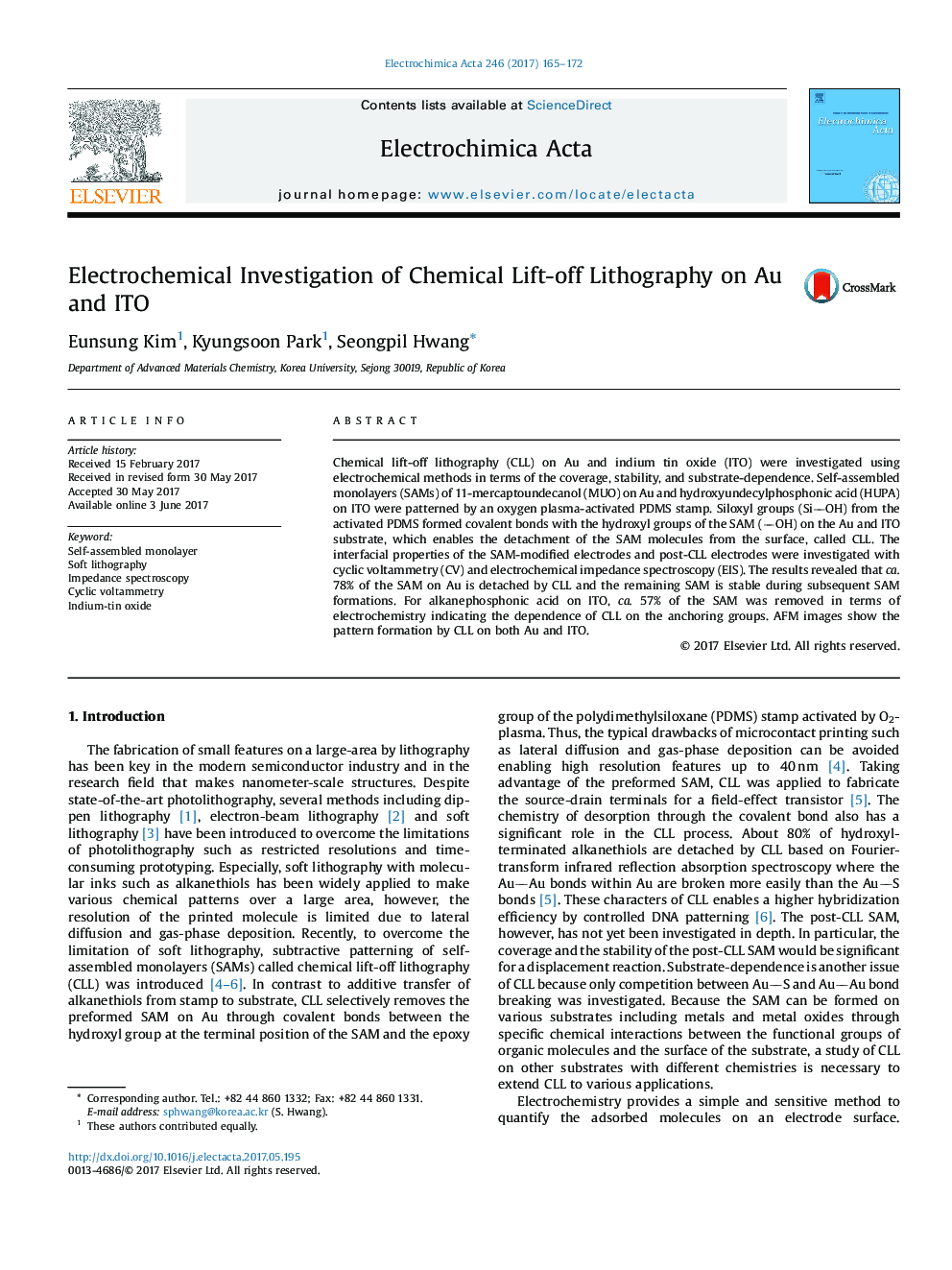| Article ID | Journal | Published Year | Pages | File Type |
|---|---|---|---|---|
| 6470422 | Electrochimica Acta | 2017 | 8 Pages |
â¢Chemical lift-off lithography (CLL) strongly depends on the substrates and anchoring groups of adsorbates.â¢The self-assembled monolayers (SAMs) on Au and ITO show 78% and 57% detachment by CLL, respectively.â¢The model based on double layer capacitance provides a reliable quantification of the coverage of the SAM after CLL.â¢Residual adsorbates are stable during the insertion of the subsequent adsorbates.
Chemical lift-off lithography (CLL) on Au and indium tin oxide (ITO) were investigated using electrochemical methods in terms of the coverage, stability, and substrate-dependence. Self-assembled monolayers (SAMs) of 11-mercaptoundecanol (MUO) on Au and hydroxyundecylphosphonic acid (HUPA) on ITO were patterned by an oxygen plasma-activated PDMS stamp. Siloxyl groups (SiOH) from the activated PDMS formed covalent bonds with the hydroxyl groups of the SAM (OH) on the Au and ITO substrate, which enables the detachment of the SAM molecules from the surface, called CLL. The interfacial properties of the SAM-modified electrodes and post-CLL electrodes were investigated with cyclic voltammetry (CV) and electrochemical impedance spectroscopy (EIS). The results revealed that ca. 78% of the SAM on Au is detached by CLL and the remaining SAM is stable during subsequent SAM formations. For alkanephosphonic acid on ITO, ca. 57% of the SAM was removed in terms of electrochemistry indicating the dependence of CLL on the anchoring groups. AFM images show the pattern formation by CLL on both Au and ITO.
Graphical abstractChemical lift-off lithography was electrochemically investigated in terms of the degree of detachment, the stability of remaining adsorbates and the dependence on substrates and anchoring groups. The study results show that a strong dependence on the substrates and the disordered structure of stable residual adsorbates.Download high-res image (139KB)Download full-size image
